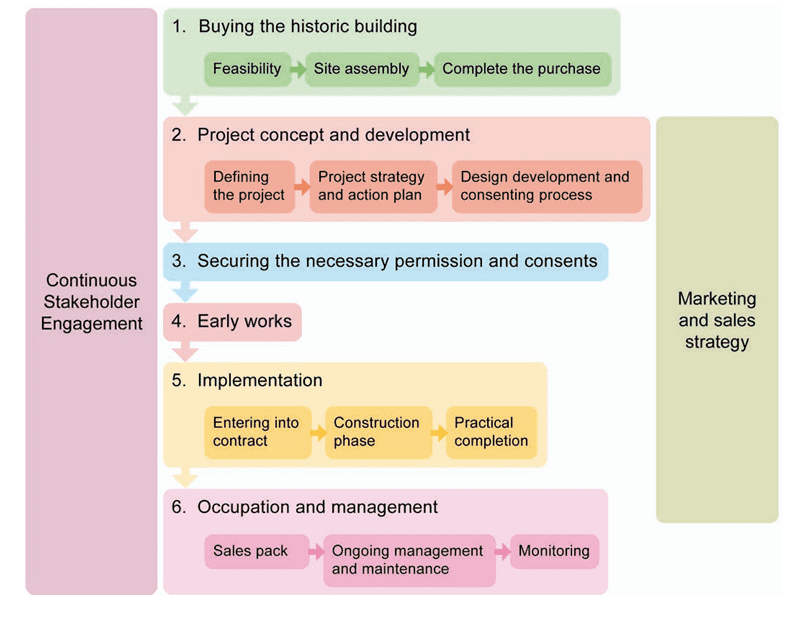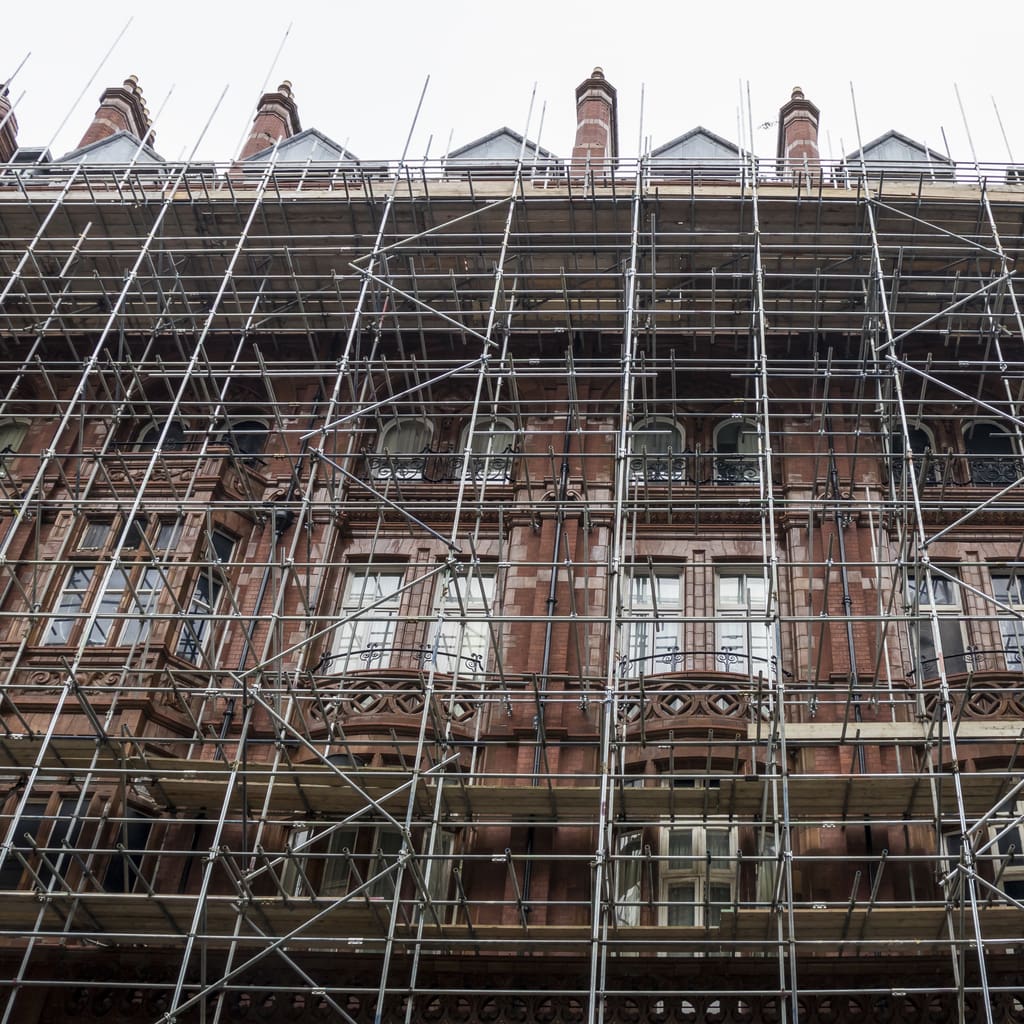Heritage Works for Housing claims the redundant textile mills of northern England alone could provide 42,000 new homes
Intended as a “daughter document” to Heritage Works (Deloitte Real Estate 2017), which it should be read alongside, Heritage Works for Housing aims to provide clear guidance for small and medium sized developers seeking to redevelop historic buildings for residential use.
The document outlines the likely challenges faced by projects that repurpose historic buildings into residential use, with step-by-step guidance for every step of the project.
Heritage housing represents a prudent use of unoccupied spaces and responds to market demand, suggests the document, with “proximity to a listed building increases property prices by up to about 10% and by 9% if within a conservation area”.
The document offers guidance for every step of the redevelopment process
Heritage Works for Housing offers advice for each part of the process to redevelop historic sites, such as feasibility testing, stakeholder engagement, heritage appraisal, design development, building consent and ongoing maintenance.
Case studies with relevant experience of these processes are also presented, all from SME developers working on projects ranging from 5 units to more than a thousand.

Case studies featured in Heritage Works for Housing include:
- Wood Street Townhouses in Manchester, converting a former Mission house into five townhouses
- Ivor House in Brixton, a former department store revitalised into 26 homes
- Murray’s Mill, also in Manchester; a 230-year old cotton mill with 108 homes in the listed building section
The document summary concludes by asserting that: “Unused or underused historic buildings should be seen as opportunities to address current industry challenges, including the housing crisis, whilst minimising carbon impacts.”
Historic England chief executive Duncan Wilson said: “This report demonstrates how historic buildings can be part of the solution to the housing crisis. It is a timely and useful guide for developers who want to adapt historic buildings for new housing, showing that historic buildings can offer attractive and sustainable living spaces that meet the needs and aspirations of modern homebuyers, while retaining their heritage significance and special character.”














